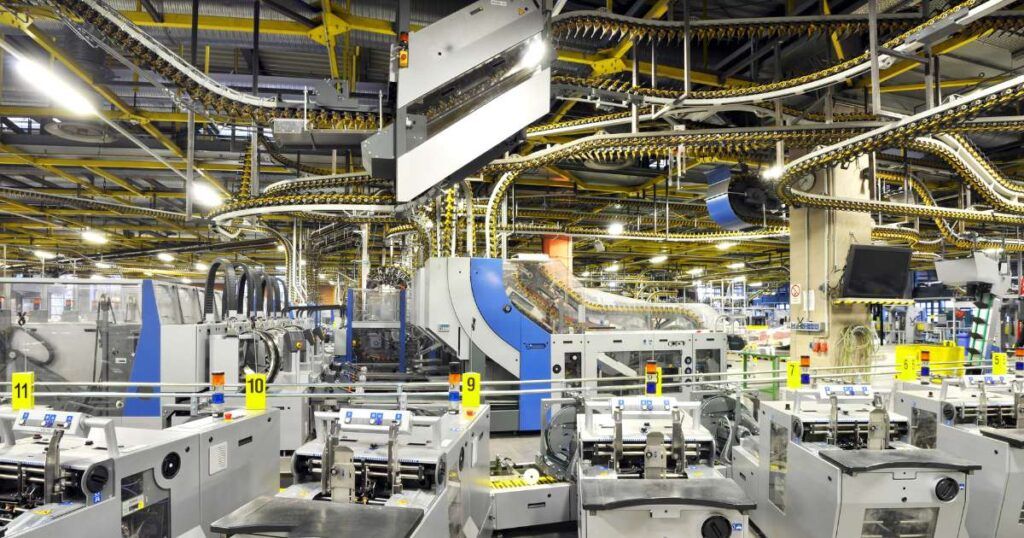The Common Business Applications of AI That We Rely on Every Day

In the modern era, many of us feel like we understand what AI is. After all, it’s around us every day. It’s in our novels and movies and news. It’s in our businesses and our competitors. It’s in our medicine and our health care. Though we may not think about it, it touches nearly every product we’ll ever own.
AI is so many things to so many people that it becomes hard to talk about. We know so much about it in general that we may find it hard to talk about in specific. In this article, we’re going to examine business needs that AI satisfies:
- Shift Scheduling
- Sales
- Production
Scheduling Personnel
Most people think about full automation when thinking about the business applications of AI. Today, most businesses still rely on people to produce their goods and services. Those people aren’t unfeeling automata; they’re human. They have families, pets, and head colds. They take vacations and celebrate holidays.
As businesses, we have to schedule around these very human needs. This is the simplest and first constraint for business scheduling. Many employers also worry about staffing levels, certifications, and labor regulations. And it isn’t as if you make the schedule once and only once. Schedules need made several times a month and often need remade due to unforeseen events.
Scheduling is a text-book application of optimization techniques. It’s so text-book that one of the top-tier academic AI conferences is called “International Conference on Automated Planning and Scheduling”. These techniques aren’t only for rostering people either! They can also schedule maintenance, travel, and the production of goods to fulfill orders.
Sales
Most commercial enterprises hinge on convincing people to buy something. AI can help with several common sales functions:
- Identify leads
- Predict the likelihood of conversion
- Measure the impact of a sales campaign
- Produce draft copy for a sales campaign
So, how exactly does AI help with these business needs? Natural language processing techniques help us automate the understanding and production of text. Generative techniques (e.g. DALL-E, Midjourney) can even produce images, seeding our imagination. Machine learning can help us group customers into cohorts. It can also predict the likelihood of churn and conversion.
Production
Production covers a huge variety of topics in a business context. Here, though, I’m referring to the creation of goods or services for sale. AI can help with nearly every aspect of production, as we’ll discuss throughout the business applications of AI.
Design
Digital twins are often a type of AI. While a CAD drawing and a simulation don’t an AI make, it’s a short walk. If we have a model of an object, we can build a way to score its ‘goodness’.
Then, we can define ways to alter that model slightly. Scoring the altered model lets us know if we made it better or worse. This is the fundamental loop of a class of techniques called genetic algorithms. They try to improve something through rapid, often random, alterations and scoring.
Manufacturing
Once you’ve designed your offering, you need to produce it somehow. AI can reduce costs and improve throughput here. The planning and scheduling techniques we mentioned earlier are also useful here.
If you need to lay out several machines on a floor, AI can help you reduce travel time between them. If you need to figure out how to cut shapes out of material, AI can minimize your waste product. If you want to reduce storage costs, AI provides just-in-time manufacturing technologies.
Quality Control
It’s not enough to produce a service. You have to produce it consistently and to a high degree of quality. This maintains your reputation and ensures repeat business. Most quality control is done by random samples and manual inspection. Sample size is often dictated by the high cost of manual inspection.
You’d look at more pieces if you could afford it. Human labor and expertise are pricey though. AI can help reduce this cost. Most defect cases are obvious: a piece is mis-stamped, fruit is bruised, and so on. These can be rejected automatically using computer vision and machine learning. This frees the human experts up to evaluate the difficult edge cases. They also have more time to investigate why the defect happened in the first place.
Maintaining Facilities & Equipment
There’s little that is more expensive than a production line going down. Seconds down can mean thousands or even millions of dollars lost depending on the business scale. When mom and pop take a sick day, it impacts their bottom line. The most recent UAW strike cost GM $200 million in the first two weeks. An unplanned outage is devastating to a product facility. However, emergency maintenance is a reality and necessity. Even planned maintenance is challenging.
Wouldn’t it be nice if you could know when machines were about to fail? Then, you could include them in your routine maintenance? This is the goal of predictive maintenance as a business application of AI. It uses machine learning to anticipate failures before they happen. Preventative maintenance reduces outages, and it’s usually cheaper in labor and parts! Most preventative maintenance technologies use machine learning. Many also rely on computer vision.
Summary
Artificial Intelligence is an umbrella term. It incorporates a broad variety of technologies and approaches. That’s why AI can do so much; it has techniques custom-tailored to every business need.
Take the first step to harnessing AI for your business.
Often, the first hardest step in applying AI is recognizing which type of problem you have in front of you. Once you know what kind of problem it is, you can choose the appropriate technology and get started.
You Might Also Like